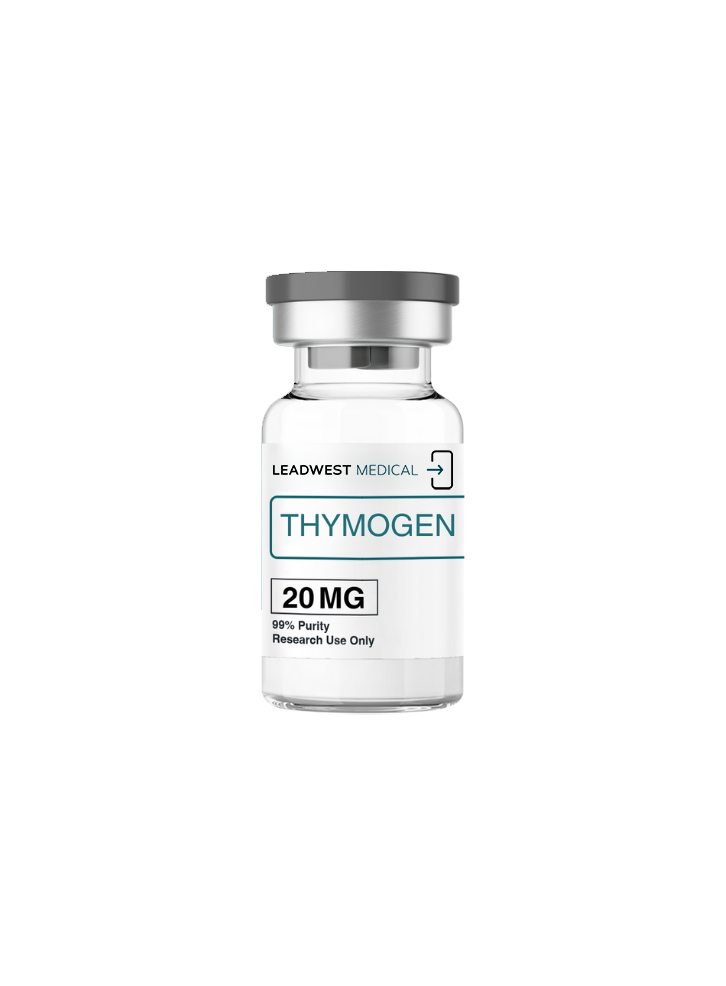Thymogen – 20mg (10mL)
4.9 Avg. Rating
1000+ Reviews
100% Online Transparent, Upfront Pricing— Experienced Providers.
Thymogen Peptide: Description, Uses, and Dosage Information
Thymogen, a synthetic dipeptide, blends L-glutamyl-L-tryptophan (Glu-Trp) to boost immunity. Scientists in the Soviet Union created it during the 1980s to mimic thymic peptides. This simple, two-amino-acid structure enhances cellular immunity. Russia and some nearby countries approve it as “Timogen” for infections and immune issues. Though less known in the West, its low cost and strength draw interest for immunotherapy.
Biological Description
Thymogen combines glutamic acid and tryptophan, forming a tiny molecule of about 333 Da. Chemists synthesize it, ensuring steady quality. Unlike bigger peptides, it stays stable longer. It targets T lymphocytes, key players in adaptive immunity. Experts think it adjusts cAMP and calcium signals in cells, though they still study its exact targets.
How Thymogen Works
Thymogen spurs T-cell growth, especially CD4+ helper and CD8+ killer T cells. This strengthens immune coordination and attack power. It also lifts NK cell action, clearing out infected or cancerous cells. Rather than broadly suppressing immunity, it sharpens cellular defenses. It tweaks cytokines too, cutting IL-6 and TNF-α while boosting calmer signals. Its short life in blood (1–2 hours) still triggers lasting effects.
Therapeutic Uses of Thymogen Peptide
Thymogen restores and lifts immunity across many uses, mainly in Eastern Europe. Doctors give it as shots, nasal sprays, or creams, based on the need. Its benefits span infections to recovery, showing its range.
Fighting Infections
Thymogen tackles acute and chronic infections like colds, TB, and herpes. It speeds up T-cell attacks on germs, shortening illness time. In Russia, doctors pair it with antibiotics for better results against bacteria.
Boosting Weak Immunity
Thymogen helps people with low immunity from chemo, radiation, or stress. It rebuilds T-cell numbers and strength. It also aids older adults, lifting their vaccine responses.
Healing After Surgery
Thymogen speeds wound healing and stops infections after surgery. It cuts risks in big operations like heart or bone fixes, studies show.
Easing Chronic Inflammation
Thymogen soothes conditions like bronchitis, psoriasis, or dermatitis. Creams calm skin flare-ups, while shots fix deeper immune glitches.
Tackling Viruses
Thymogen fights hepatitis B, C, and flu by powering up antiviral T cells. Some Russian tests during COVID-19 hint it may ease severe cases, but proof is thin.
Supporting Cancer Care
Thymogen aids cancer patients after chemo, lowering infection odds. It may also help the body spot tumors better, though it’s less studied here than other peptides.
Calming Allergies and Autoimmunity
Thymogen balances Th1/Th2 immunity, possibly easing asthma or early arthritis. More research will clarify its role here.
Dosage Information
Thymogen’s doses shift by form, method, and goal, based on Russian rules and some studies. It’s not U.S.-approved, so use stays regional or experimental. A doctor should fine-tune these plans.
Shots
Doctors inject 100 mcg daily for 5–10 days for infections or immune boosts. Doses range from 50–300 mcg, with lower amounts for prevention and higher for emergencies. Treatment lasts 5–20 days, then drops to 100 mcg a few times weekly.
Nasal Spray
For colds or prevention, users spray 25–50 mcg per nostril daily (50–100 mcg total) for 5–10 days. Each puff gives 25 mcg.
Cream
For skin issues, people rub 0.01%–0.1% Thymogen cream on sores 1–2 times daily for 10–20 days. It lifts local defenses.
Key Notes
Thymogen rarely causes trouble—maybe a sore spot or brief tiredness. High doses might over-rev immunity, sparking mild flu-like feelings. Avoid it with tumors or allergies until safety clears. Checking T-cell levels helps adjust doses.
Challenges and Future Directions
Thymogen’s Soviet roots and scarce Western studies limit its fame. Few explore it outside Russia, leaving data in local journals. Its short blood life demands frequent doses, though its simple build helps stability.
Research Gaps
Most proof comes from Russian work, needing global trials to win trust. English studies lag, slowing its spread.
Next Steps
Scientists could pair Thymogen with other immune aids or craft slow-release versions. Bigger tests might push it worldwide, raising its profile.
Summary
Thymogen, a small but mighty peptide, shines in infection control and immune lifts where it’s approved. Its easy make, low cost, and flexible doses make it handy. As studies grow, it could reach more people, tapping its full promise.
References
- Khavinson, V. K., & Morozov, V. G. (2003). “Peptides of Pineal Gland and Thymus Prolong Human Life.” Neuroendocrinology Letters. https://www.nel.edu/userfiles/articlesnew/NEL240303R02.pdf
- Goldstein, A. L., & Badamchian, M. (2004). “Thymosins: Chemistry and Biological Properties.” Current Medicinal Chemistry. https://www.eurekaselect.com/article/16234
- Russian Ministry of Health. (2010). “Timogen: Instructions for Use.” (Translated; original in Russian, limited access).
- Sukhanov, V. A., et al. (1997). “Immunomodulatory Effects of Thymogen in Surgical Patients.” Khirurgiia. https://pubmed.ncbi.nlm.nih.gov/9235755/
- Morozov, V. G., & Khavinson, V. K. (1997). “Natural and Synthetic Thymic Peptides as Immunomodulators.” Biulleten’ Eksperimental’noi Biologii i Meditsiny. (Russian journal, limited access).
What are the Benefits of Online Telemedicine?
- Simple and easy tele-health video visit
- Monthly delivery medication and supplies to your door
- Messaging your provider to discuss side effects and medication dosage
Can I Speak with Experienced Providers Quickly?
- Providers are available during 8 am – 6 pm PST
- Your questions are received immediately
- Routed to experienced providers
- Respond within 24 hours
Are There Extra Charges?
- No Extra Charges
- Unless you request a follow up video visit
- Or your provider requests a follow-up video visit
Everything you need to:
Lose Weight
Lose up to 22% of your body weight using our evidence-based medications and programs backed by science
Enhances Health
Clinically proven for weight loss and glycemic control
Accelerated results
Optimize with metabolic testing and support
Control hunger
Curbs appetite and keeps you feeling fuller, longer
Everything you need to:
I’ve lost 17lbs in 21 days with minimal calorie cut back! You have some nausea initially (they give you Zofran) but that rarely happens now.
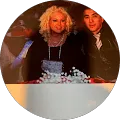
Michelle D.
I’ve lost 17lbs in 21 days with minimal calorie cut back! You have some nausea initially (they give you Zofran) but that rarely happens now.

Michelle D.
I’ve lost 17lbs in 21 days with minimal calorie cut back! You have some nausea initially (they give you Zofran) but that rarely happens now.

Michelle D.

Step 1
Everything you need to:
No more annoying appointments! After placing your order, you will complete a medical questionnaire about your health and weight-loss goals—all from the comfort of your phone.
Step 2
Telehealth Visit
Finish your medical questionnaire, and a board-certified Leadwest Provider or Physician will provide a same-day* consultation to thoroughly evaluate your health and weight-loss goals.
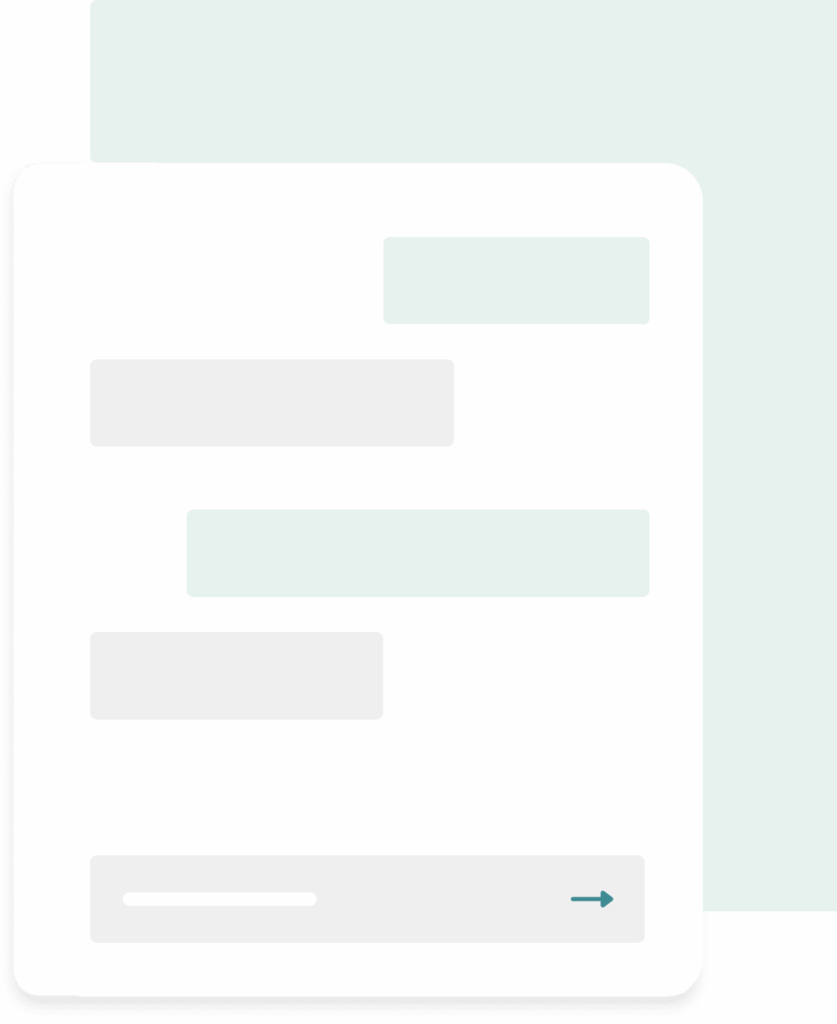
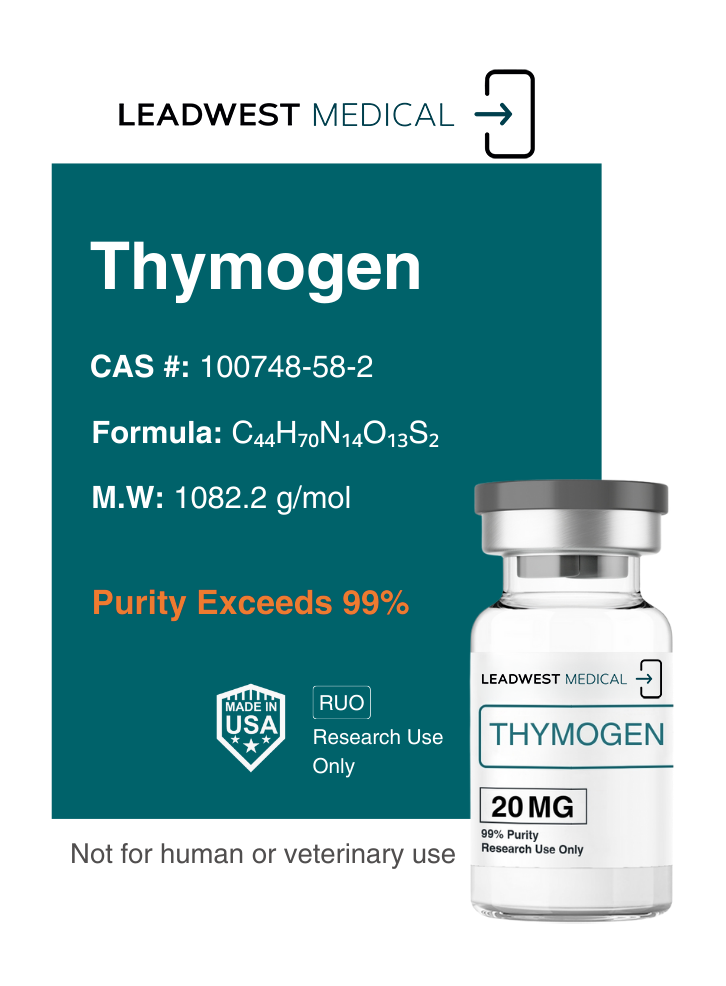
Step 3
Receive Medication or Peptide
Once your prescription is approved, a pharmacist will prepare your medication and ship it to your door in 3-5 business days. Plus, you’ll have 24/7 access to your care team, educational resources, and so much more.
Available Plans
All of the LWMD programs use the most up-to-date medical knowledge to give you the best results possible. Meet our care team of board-certified physicians licensed in your state!
Semaglutide+B12 Quarterly Program (3 Month)
$233
/month billed quarterly + free shipping
-For those maintaining their weight loss progress
-Consistent GLP-1 doses to support long-term results
-24/7 access to the care team
FEATURES
Best for those dedicated to maintaining their weight loss progress and long-term metabolic health.
What's included in this complete program?
Enjoy a hassle-free, 3-month supply program with a simple telehealth visit to get started.
Comprehensive Medication Delivery
Receive an initial two-month supply of compounded Semaglutide GLP-1 medication, followed by your third vial at the end of month two, with automatic shipments to ensure no delays-all while saving hundreds of dollars compared to monthly purchases.
High-Quality Assurance
Each batch of medication is thoroughly inspected by licensed, certified pharmacists to meet the highest standards.
Unlimited Support
Benefit from ongoing support, including unlimited messaging with your provider for dosage and side effect discussions, personalized nutrition guidance, and custom exercise videos.
Complete Program Commitment
The 3-month Maintenance Program includes 3 month supplies of all doses (0.5mg, 1mg, 1.7mg and 2.4mg)
Semaglutide+B12 Quarterly Program (3 Month)
$289
/month + $29.99 shipping
-Includes telehealth visit and any dose. No price increases.
FEATURES
Ideal for those committed to achieving lasting weight loss and metabolic benefits.
Monthly Subscription
Ideal for those familiar with the medication or transitioning from another program, with a simple telehealth visit to get started.
Convenient Monthly Deliveries
Receive compounded Semaglutide GLP-1 medication and supplies delivered to your door each month, with all doses (0.5mg, 1mg, 1.7mg, 2.4mg/week) covered.
Quality Assurance
Every batch is rigorously checked by licensed, certified pharmacists to ensure top-quality standards.
Unlimited Support
Access ongoing support, including unlimited messaging with your provider, personalized nutrition guidance, diet tips, and more.
Science Backed.
Medically Approved.
All of LWMD programs use the most up-to-date medical knowledge to give you the best results possible. Meet our care team of board certified physicians licensed in your state!!!
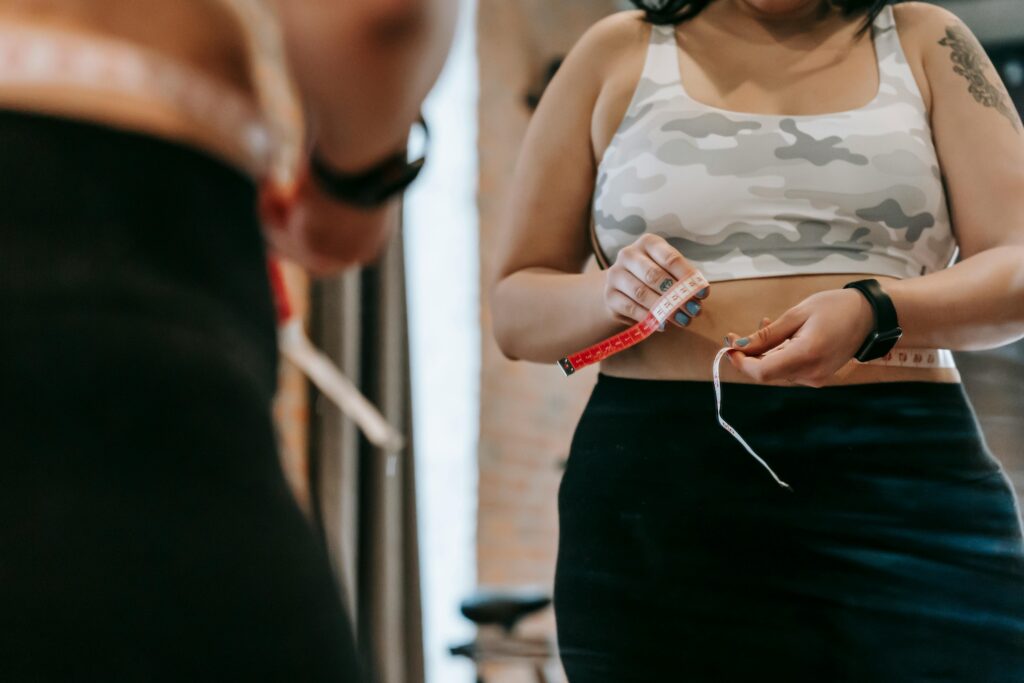
Leadwest Misson
At Leadwest Medical our mission is to aid you in achieving your weight loss and metabolic goals. Through our platform, you can conveniently access cutting-edge GLP-1 medications, including compounded Semaglutide (also found in Ozempic® and Wegovy®) and Tirzepatide (also found in Mounjaro® and Zepbound™), all from your mobile device.
In addition to medication accessibility, we offer clinical oversight, metabolic testing as necessary, and ongoing support from board-certified physicians. Furthermore, we provide dietary guidance, and our Health Coach will be available, alongside all the resources essential for fostering a healthier, happier lifestyle. Allow us to accompany you on the journey towards a healthier, happier you.

Leadwest Commitment to Quality
We work with a registered and certified third-part lab to run quality control checks for every lot of compounded peptides prescribed for LWMD patients.
Our labs test four key characteristics that are associated with quality and safety. We are committed to our patients, lives and improving their quality of life.
Our Commitment to Compliance
Compounded semaglutide refers to a personalized medication formulated within a state Board of Pharmacy or FDA-licensed compounding facility as per a prescription provided by a licensed healthcare professional. These compounded drugs are mandated to use solely ingredients from FDA-licensed sources and undergo rigorous testing for potency, sterility, and purity.
LWMD collaborates exclusively with licensed sterile compounding pharmacies throughout the United States.
Potency
This test verifies that the compounded semaglutide contains the correct concentration of medication.
Endotoxicity
Endotoxicity is tested in combination with sterility to help ensure that the medication is free of toxins that can cause you harm.
Sterility
Sterility tests check that the medication is free of foreign
organisms or unwanted pathogens.
pH
The pH test checks for the ideal acid/base ratio to minimize irritation of the injection.
Frequently Asked Questions
Everything you need to know about our treatment plans and options. Keep scrolling to see detailed questions and answers.
What is LWMD?
LWMD is a concierge and online platform with subscribers that connects patients to licensed healthcare professionals. We offer support for weight loss, anti-aging, and metabolic health.
Through our simple online process you can connect with licensed medical providers who can recommend customized treatment plans including prescription treatments, if appropriate, shipped right to your door.
How does LWMD work?
First, complete an online intake form to give your healthcare provider information about your symptoms and medical history. Then, a licensed provider will assess that information and determine the right treatment option for you. A provider will send your treatment recommendation to your patient portal.
If your provider determines treatment is right for you, it’s delivered in discreet packaging to your shipping address.
Do your plans include prescriptions and medications?
Yes, LWMD’s plans include the cost of the online tele-health visit, prescription medications, and supplies. Prescription medications are provided only after consultation with a physician to determine if the medication is appropriate for you. LWMD offers a comprehensive package that includes ongoing support and regular check-ins to optimize your treatment.
Do you take insurance?
No insurance is needed, we offer transparent and affordable out-of-pocket prices.
How do I sign up with LWMD?
STEP 1: Place your order online by selecting your program. Complete your medical questionnaire (link emailed and accessed via the patient portal) and connect with your physician. No need to wait weeks or months for an appointment with your medical specialist.
STEP 2: Once your prescription is approved, your medication and supplies are shipped directly to your door from our US-based FDA 503A licensed partner pharmacy (3-5 business days).
STEP 3: Enjoy comprehensive support throughout your treatment journey. This includes medication, supplies, diet tips, and rewards. As a LWMD member, you’ll have instant access to chat with your board-certified physician or a customer service team member 24/7 to discuss medication management, refills, and more.
Why choose LWMD?
We have a 100% risk free telehealth visit with every purchase. If you are not eligible, you will recieve a FULL refund.

